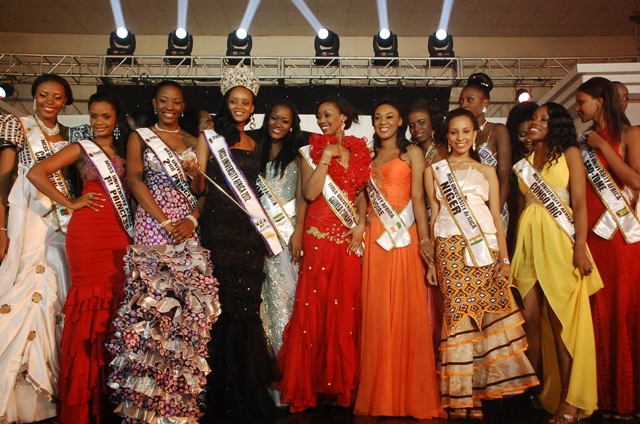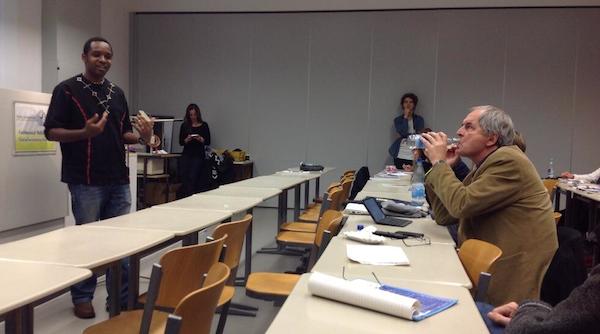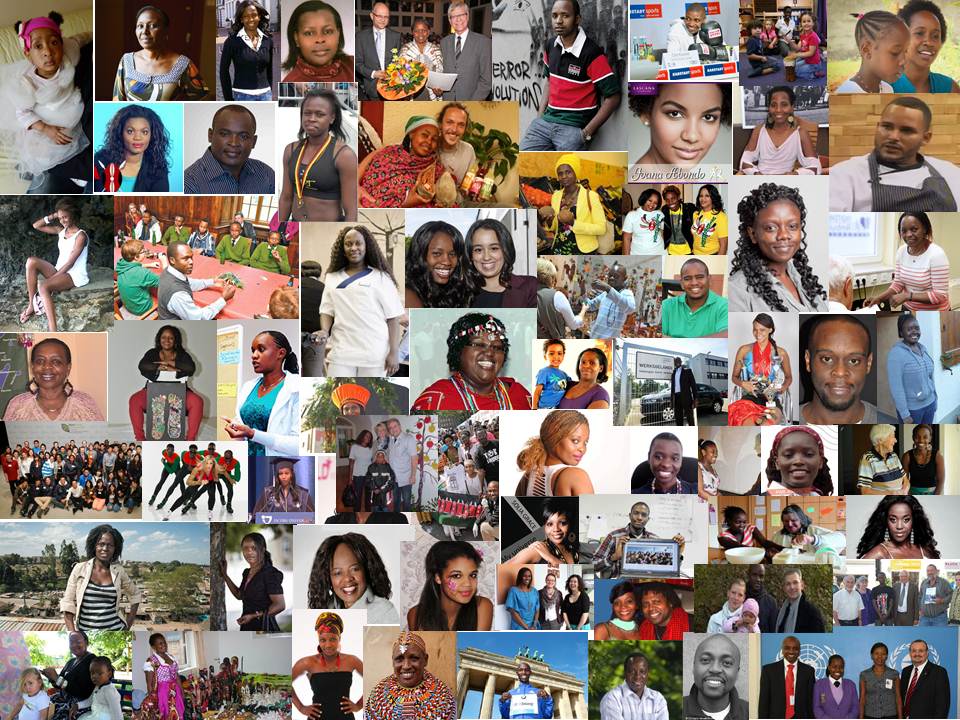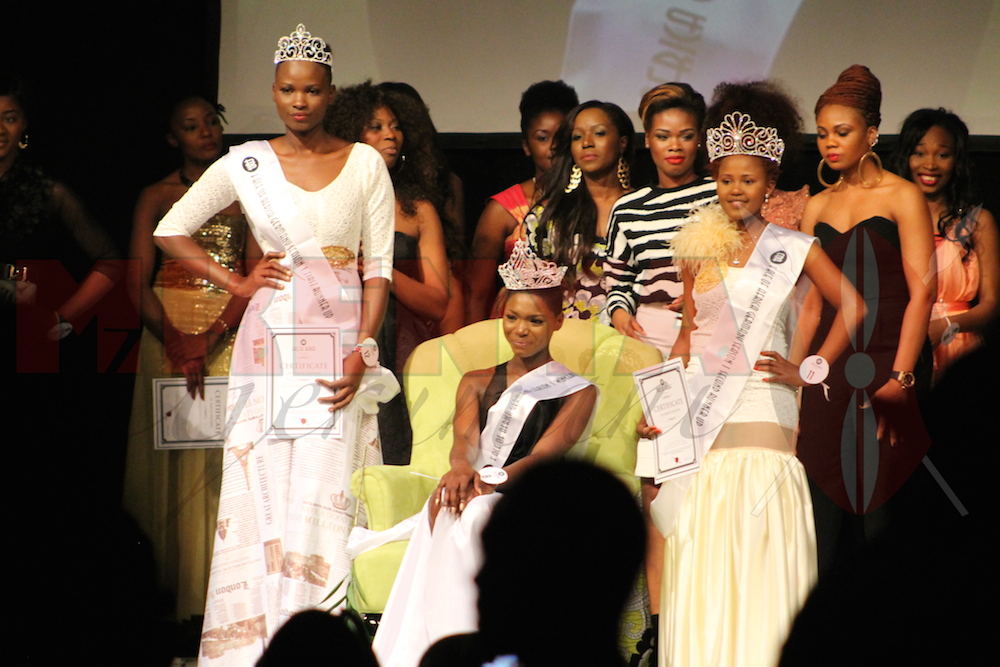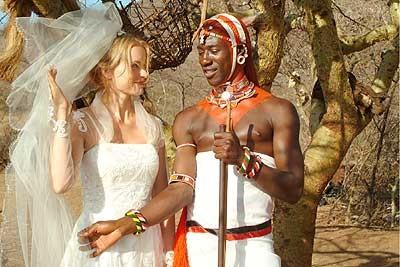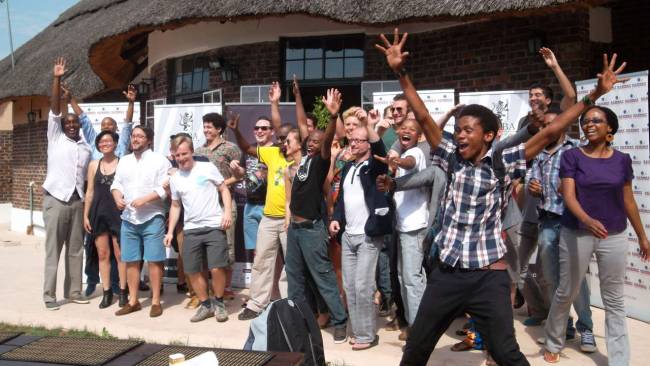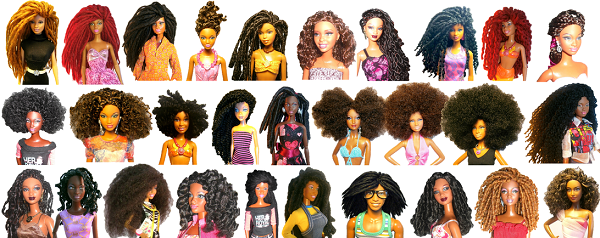
An acquintance here in Germany with two beautiful daughters told his wife to make it known to all her friends that his daughters wouldn’t get “white” dolls as presents. The guy would actually destroy any white dolls the daughters got.
Although this looks dramatic, to an extent you understand a man’s frustrations as he tries to ensure his daughters grow up knowing they are beautiful just as they are without admiring some white dolls. For this father, the best he could do was ensure his daughters didn’t play with white dolls. For richer and more influential fathers like Chris Rock, he did a movie to try and explain to his daughter what “Good Hair” meant after they kept asking to get a perm.
You might think dolls have little to no influence to how a child is raised or what kind of person their become in society, but you’d be surprised. Here’s a parent’s view on that discussion.
This past week, I came across a video (see above) that shocked the hell out of me. In the video, a couple of black preschool children are shown two dolls, one white and the other black. They are then asked which of the two is pretty and which one is ugly. All the BLACK children answer that the black doll is ugly.
My first reaction was anger. Anger at the kids. How could they? I fumed. Just as quickly, I found myself getting angry at their parents. What did they tell these children that made them think so little of themselves, of people who look like them, of their own race? In the moments that followed, I wondered whether to share the video with other people. It was embarrassing and humiliating. By sharing it, wouldn’t I be spreading the same message? The message that black people think so little of themselves?
I remembered an article I read in the Economist about the lucrative skin bleaching cream industry that was estimated to be worth at least 10 billion dollars globally. 77% of women in Nigeria, Africa’s most populous nation apparently used skin bleaching creams. Was it a wonder that black kids were now declaring to all and sundry that ‘black’ is ugly?
I clicked on ‘share’ and posted the video on both myFacebook page and my Twitter page.
In the meantime, I started wondering what my kids would say, were they to be asked the same questions. Would they like those kids say that the white doll was prettier than the black doll? I felt panic gripping me and decided there and then that I was going to test them. My son hates dolls. Dolls of any kind so it was kind of pointless to ask him. My eight year old daughter was away visiting her paternal grandparents.
I went to her bedroom. The walls are pink and it is the brightest, most girly room I have ever seen. I stood there watching her desk. Her books were neatly arranged. Next to the books was a note she had written about what she needed to do before a regional reading challenge in which she was going to represent her school. I perused the books blindly not sure what I was searching for. And then I saw them. And felt my legs freezing. They were lying peacefully on her little pram somewhere in the farthest corner of the room. The two little blond dolls.
There was no sign of her black doll. I stared blankly and felt tears. Tears of shame. What right did I have to judge the parents of those kids when my own kid preferred blond dolls to the black doll?
I grabbed the dolls and decided that I was going to get rid of them. I was going to hide them somewhere where she couldn’t find them. Later that evening, my daughter came back. I resisted the urge to blurt out what had been on my mind the whole day. I was going to wait until we were alone, preferably in her room before I carried out the test. My ultimate test of her loyalty to the black race. I waited impatiently for her grandparents to leave and quickly asked her to follow me.
“Mummy, what’s wrong?” she asked sensing that I wasn’t my usual self. I turned to look at her but before I could utter a word, I saw her. Lying on top of my daughter’s little suitcase, she was dressed in her pink and cream flowered pyjama. I felt myself smiling but didn’t say anything.
“Mummy…” My daughter called out again. She followed my gaze and realized that I was staring at her doll. She picked her up and put her in her little suitcase oblivious of the relief spreading through my soul. Her paternal great grandma who has since passed on gave it to her on her second birthday. She had asked me what the word for a ‘gift’ in Swahili is. I said ‘Zawadi’. As she handed the little black doll to my daughter, she repeated the word: But instead of Zawadi, she said ‘Sawadi’.

Germans often pronounce the ‘z’ as‘s’. From that point on, we called the little black doll Sawadi.
For my daughter, it was love at first sight. She carried her everywhere. She let her sleep on her bed. Wherever she went, Sawadi accompanied her. In my panic, I had forgotten that important fact.
I walked to my desk and switched my laptop on.
“Mummy” she called out again looking confused.
“Its okay” I said as I walked over and gave her a hug.
I logged onto Facebook.
Three of my friends had responded to my post. As I had expected, they sounded shocked.
I wasn’t surprised that only three responded. I have learnt that there are topics about which people are very uncomfortable. Most people rarely express an honest opinion about something that might put them on a collision course with the popular accepted opinion or worse get them labeled something; racist, tribalist, radical, etc. I understand. I really do.
I clicked onto the video again and this time round, understood something else. How could I have missed it the first time? That video wasn’t about discouraging racism. It wasn’t about educating people about racism. It wasn’t about challenging the notion of racism. It certainly wasn’t about dolls. It was about confirming what the researcher believed to be true.
In social scientific research, there is something called research assumption or researcher’s bias. It basically means that no research takes place in a vacuum. The researcher’s beliefs or assumptions play a big role in why and how they conduct the research, the type of questions they pose, how they choose their sample and most importantly how they interpret their results. It is impossible to assess the credibility of any scientific finding without assessing the limitations of the process.
It all suddenly made sense. Contrary to what I had initially thought, this video was nothing more than a cheap attempt to ‘scientifically’ prove that white skin is preferable to black skin. What better way than to get dark skinned kids to declare on camera that they preferred white skin? Instead of becoming mad, I found myself smiling. That video was at best sensational and at worst malicious. I walked to where I had hidden the blond dolls and put them back in my daughter’s room.
I know that I am not in the minority when I say that I don’t have a problem with my black skin. As a matter of fact, I have never thought of it as something to be ashamed of or to be proud of. I am black, and that is okay.
I am not delusional, so I will not claim that all human beings are beautiful. There are many beautiful and ugly people in the world. And they come, in all shades.
Caroline Adhiambo is a renowned Kenyan-German author of “The Outsider(s)” based in Germany, you can read about her at The Self Proclaimed Kati and Blada Champion or visit her blog: The Foreigner’s Journal.

